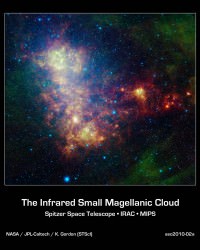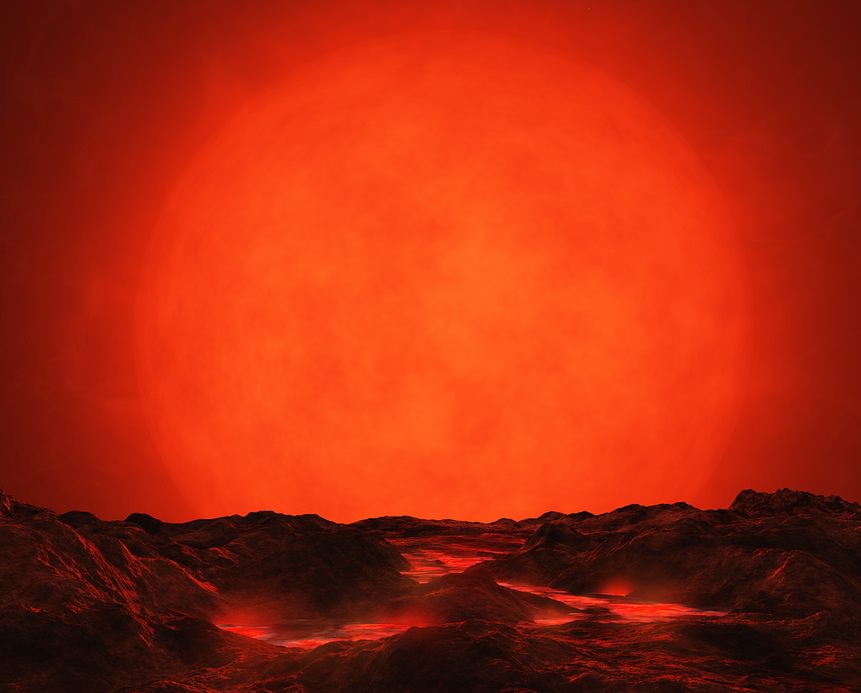One has never been spotted for sure in the wild jungle of strange stellar objects out there, but astronomers now think they have finally found a theoretical cosmic curiosity: a Thorne-Zytkow Object, or TZO, hiding in the neighboring Small Magellanic Cloud. With the outward appearance of garden-variety red supergiants, TZOs are actually two stars in one: a binary pair where a super-dense neutron star has been absorbed into its less dense supergiant parter, and from within it operates its exotic elemental forge.
First theorized in 1975 by physicist Kip Thorne and astronomer Anna Zytkow, TZOs have proven notoriously difficult to find in real life because of their similarity to red supergiants, like the well-known Betelgeuse at the shoulder of Orion. It’s only through detailed spectroscopy that the particular chemical signatures of a TZO can be identified.

Observations of the red supergiant HV 2112 in the Small Magellanic Cloud*, a dwarf galaxy located a mere 200,000 light-years away, have revealed these signatures — unusually high concentrations of heavy elements like molybdenum, rubidium, and lithium.
While it’s true that these elements are created inside stars — we are all star-stuff, like Carl Sagan said — they aren’t found in quantity within the atmospheres of lone supergiants. Only by absorbing a much hotter star — such as a neutron star left over from the explosive death of a more massive partner — is the production of such elements presumed to be possible.
“Studying these objects is exciting because it represents a completely new model of how stellar interiors can work,”said Emily Levesque, team leader from the University of Colorado Boulder and lead author on the paper. “In these interiors we also have a new way of producing heavy elements in our universe.”
Definitive detection of a TZO would provide direct evidence for a completely new model of stellar interiors, as well as confirm a theoretically predicted fate for massive star binary systems and the existence of nucleosynthesis environments that offer a new channel for heavy-element and lithium production in our universe.
– E.M. Levesque et al., Discovery of a Thorne-Zytkow object candidate in the Small Magellanic Cloud
One of the original proposers of TZOs, Dr. Anna Zytkow, is glad to see her work resulting in new discoveries.
“I am extremely happy that observational confirmation of our theoretical prediction has started to emerge,” Zytkow said. “Since Kip Thorne and I proposed our models of stars with neutron cores, people were not able to disprove our work. If theory is sound, experimental confirmation shows up sooner or later. So it was a matter of identification of a promising group of stars, getting telescope time and proceeding with the project.”
The findings were first announced in January at the 223rd meeting of the American Astronomical Society. The paper has now been accepted for publication in the Monthly Notices of the Royal Astronomical Society Letters, and is co-authored by Philip Massey, of Lowell Observatory in Flagstaff, Arizona; Anna Zytkow of the University of Cambridge in the U.K.; and Nidia Morrell of the Carnegie Observatories in La Serena, Chile. Read the team’s paper here.
Source: University of Colorado, Boulder. Illustration by ‘Digital Drew.’
__________________________
*In the paper the team notes that it’s not yet confirmed that HV 2112 is part of the SMC and could be associated with our own galaxy. If so it would rule out it being a TZO, but would still require an explanation of its observed spectra.

